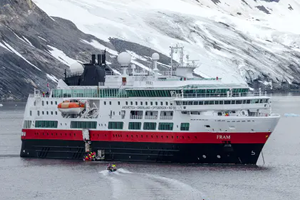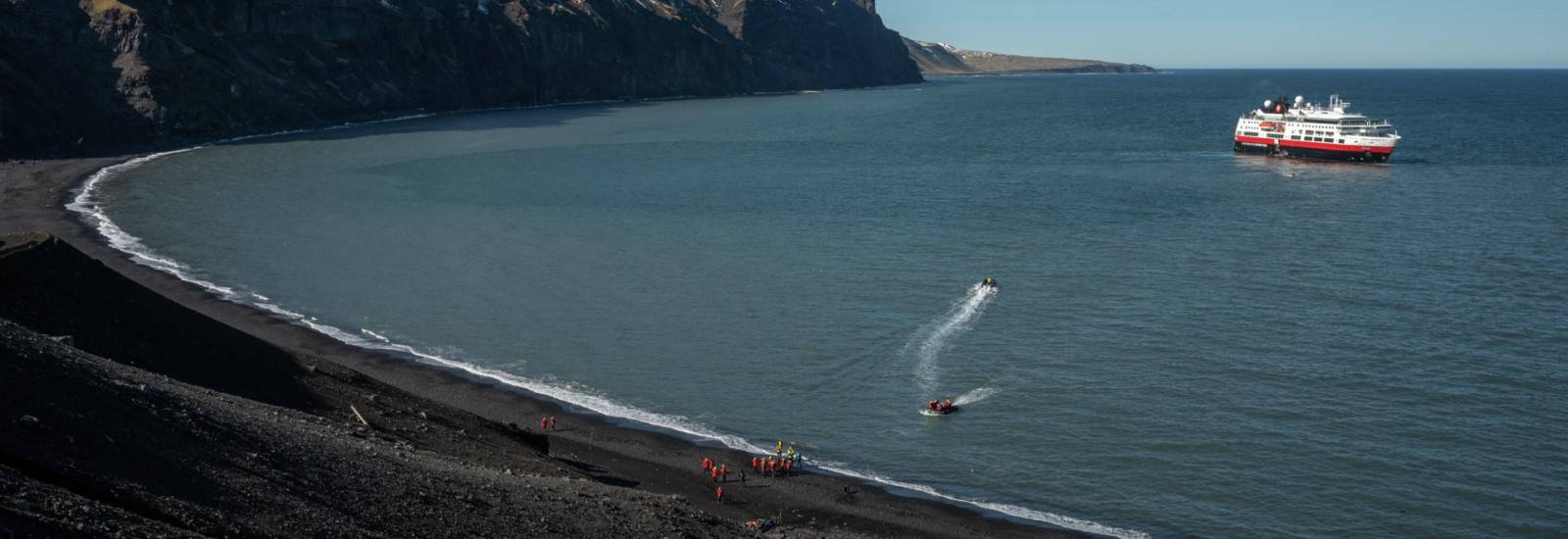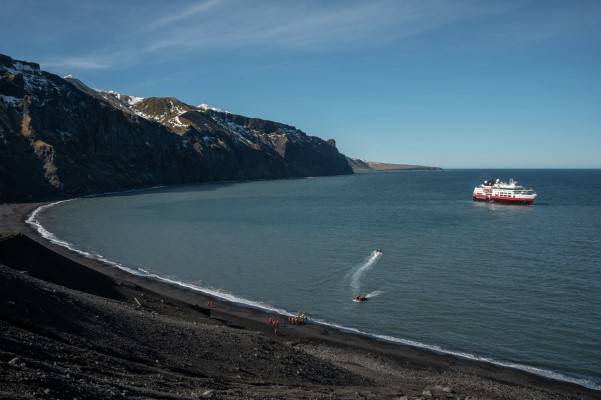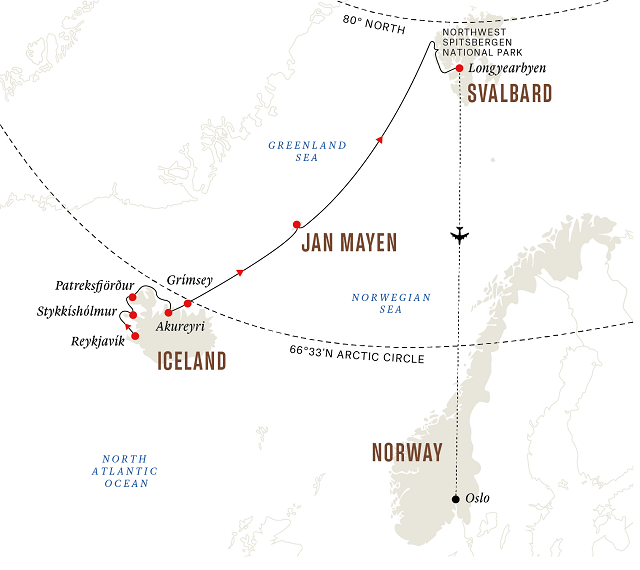DATES / RATES
Rates are listed per person
|
| Start Date | End Date | From EUR | From USD |
|---|
| May 29, 2024 | Jun 07, 2024 | |
0 |
Rates are listed per person
|
| Start Date | End Date | From EUR | From USD |
|---|
| May 29, 2024 | Jun 07, 2024 | |
0 |
ITINERARY
Day 1:Reykjavik
Day 2:Stykkishólmur
Day 3:Patreksfjördur
Day 4:Akureyri
Day 5:Grímsey
Day 6:At sea
Day 7:Jan Mayen Island
Day 8:At sea
Day 9:North West Spitsbergen National Park
Day 10:Longyearbyen
MS Fram (Expedition, 200-guests)
MS Fram is purpose built as an expedition vessel with a higher ice-class, chart drawing tools, ship depth sounding database, extractable forward sounding sonar, iceberg search lights, autonomous tracking system, oversized oil retention system for self-sufficiency, and a full 'expedition tools-deck' equivalent to a car-deck that holds 25 vehicles. We believe that as an explorer you need an 'expedition base-camp' that is comfortable - something that combines 'all oceans capabilities' with safety, flexibility and environmental friendliness. That's Fram - simply the best expedition ship imaginable.
 (Click image to view Ship details)
(Click image to view Ship details)
WHAT'S INCLUDED
- Flight in economy class from Longyearbyen to Oslo after the expedition cruise
- Transfer from the ship to the airport in Longyearbyen after the expedition cruise
- A stay in a cabin of your choice
- Breakfast, lunch and dinner including beverages (house beer and wine, sodas, and mineral water) in Restaurant Aune
- À la carte restaurant Lindstrøm included for suite guests
- Complimentary tea and coffee
- Complimentary Wi-Fi on board. Please note there is very limited Wi-Fi and phone signal in the remote areas we travel to, and streaming is not supported. When in Svalbard, there is no Wi-Fi or mobile coverage except in Longyearbyen.
- Complimentary reusable water bottle
- English-speaking Expedition Team who organise and accompany activities on board and ashore
- Range of included activities
Onboard Activities - In-depth lectures and discussions hosted by experts on the Expedition Team
- Full use of our Science Center, extensive library and advanced biological and geological equipment
- Citizen Science Programme where you can assist with ongoing scientific research
- Photography tips and techniques for capturing landscape and wildlife from our onboard professional photographer
- Use of ship's hot tubs, sauna and gym
- Informal gatherings with the crew for daily briefings
Landing Activities - Escorted landings with small expedition boats
- Loan of boots, trekking poles and all equipment for activities
- Complimentary wind- and water-resistant expedition jacket
- Expedition photographers on hand to assist you
Notes - All planned activities are subject to weather and ice conditions
- Excursions and activities are subject to change
- Please make sure you meet all entry and boarding requirements
- No gratuities expected
Not Included - International flights
- Travel insurance
- Luggage handling
- Optional shore excursions with our local partners
- Optional small-group activities with our Expedition Team







